Results 8,011 to 8,020 of 12096
Thread: Anandtech News
-
04-06-18, 03:11 PM #8011
Anandtech: Kingston Launches A1000 Entry-Level PCIe SSDs: Phison PS5008-E8 with 3D TL
Solid-state drives with a PCIe interface have become standard storage solutions for enthusiast-grade PCs these days. By contrast, gamers with budget constraints tend to buy SSDs featuring a SATA bus because of their lower price. To address such customers with something faster, SSD makers release new product families based on inexpensive controllers and NAND memory. Over the past few months, we have seen announcements of such drives from various makers, now it is Kingston’s turn to try its luck with inexpensive NVMe SSDs.
Kingston’s A1000 NVMe SSDs are based on the Phison PS5008-E8 controller (four NAND channels, LDPC, NVMe 1.2, PCIe 3.0 x2 interface, etc.) and 256 Gb BiCS 3D TLC NAND flash from Toshiba. The Kingston A1000 SSDs will come in 240 GB, 480 GB, and 960 GB configurations, thus targeting people looking forward more or less decent capacities. It is a little bit surprising not to see a 120 GB model in an entry-level SSD family, but skipping this capacity point has its rationale: Kingston avoids a race to the bottom by not competing against the cheapest SSDs with a SATA interface (something that preserves its profit margins and reserves NAND for more popular products).
Peak sequential performance of the Kingston A1000 drives is rated at up to 1500 MB/s for reads as well as at up to 1000 MB/s for writes, which is considerably higher when compared to SATA SSDs, but is substantially lower when compared to drives with a PCIe 3.0 x4 interface. As for random performance, Kingston specs the drives for up to 120K/100K read/write IOPS, which is a bit lower when compared to some competing offerings featuring the same controller and memory.
As for reliability and endurance, all the Kingston A1000 SSDs are rated for one million hours MTBF and come with a five-year warranty. The entry-level 240 GB model is rated for 150 TB TBW (to be written), whereas the 960 GB SKU is expected to handle 600 TB TBW, which equates to around 0.34 TB DWPD (drive writes per day) over five years, a rather high rating for an entry-level consumer SSD series (but naturally a bit below when compared to higher-end drives).
Kingston advertises its A1000-series SSDs as offering “twice the performance of SATA at near SATA pricing,” so their MSRPs are just as important as their performance characteristics. At present, the Kingston A1000 SSDs are only available directly from the company with a ~30% discount, but the manufacturer says that the drives will be available from leading retailers like Amazon and Samsung shortly. Right now, the A1000 240 GB is listed for $120, the 480 GB model costs $218, and the 960 GB SKU is priced at $403. A quick calculation shows that Kingston is selling its new drives at $0.41 - $0.5 per GB, which is not that high, but which is in line with prices of the speedier MLC-based Kingston KC1000-series. Meanwhile, there are faster 3D TLC-powered drives available at around $0.35 per GB, or even lower.Kingston A1000 Specifications Capacity 240 GB 480 GB 960 GB Model Number SA1000M8/240G SA1000M8/480G SA1000M8/960G Controller Phison PS5008-E8 NAND Flash Toshiba's 256 Gb 64-layer BiCS3 3D TLC Form-Factor, Interface M.2-2280, PCIe 3.0 x2, NVMe 1.3 Sequential Read 1500 MB/s 1500 MB/s 1500 MB/s Sequential Write 800 MB/s 900 MB/s 1000 MB/s Random Read IOPS 100K IOPS 100K IOPS 120K IOPS Random Write IOPS 80K IOPS 90K IOPS 100K IOPS Pseudo-SLC Caching Supported DRAM Buffer Yes, capacity unknown TCG Opal Encryption No Power Management DevSleep, Slumber Warranty 5 years MTBF 2,000,000 hours TBW 150 TB 300 TB 600 TB Price $120 $218 $403
Buy Kingston A1000 240 GB on Amazon.com
Since the A1000 is only beginning its life cycle, its price may be higher than it should be. The market tends to “fix” pricing of products over time.
Related Reading:Comparison of Kingston's NVMe SSDs Capacity A1000 KC1000 240 GB 480 GB 960 GB 240 GB 480 GB 960 GB Model Number SA1000M8/240G SA1000M8/480G SA1000M8/960G SKC1000/240G SKC1000/480G SKC1000/960G Controller Phison PS5008-E8 Phison PS5007-E7 NAND Flash Toshiba's 256 Gb 64-layer BiCS3 3D TLC Toshiba's 128 Gb planar MLC Form-Factor, Interface M.2-2280, PCIe 3.0 x2, NVMe 1.2 M.2-2280, PCIe 3.0 x4, NVMe 1.1 Sequential Read 1500 MB/s 2700 MB/s 2700 MB/s Sequential Write 800 MB/s 900 MB/s 1000 MB/s 900 MB/s 1600 MB/s Random Read IOPS 100K IOPS 120K IOPS 225K IOPS 290K IOPS Random Write IOPS 80K IOPS 90K IOPS 100K IOPS 190K IOPS Price $120 $218 $403 $120 $228 $420 - Lite-On Adds MU X SSD to Lineup: Phison PS5008-E8, 3D TLC, Up to 1600 MB/s
- Patriot Preps Budget-Priced & Phison-Based Scorch NVMe SSD For Q3
- Patriot Announces EVLVR Thunderbolt 3 SSD: Phison PS5008-E8, Up to 1.5 GB/s, 1 TB
- Kingston at CES 2018: A 6.4 TB U.2 Enterprise SSD with Four M.2 Behind a PEX Chip
More...
-
04-07-18, 09:24 AM #8012
Anandtech: NVIDIA Moves Fermi GPUs to Legacy Status, Ends Mainstream Driver Support f
This week, NVIDIA has announced that they are ending mainstream graphics driver support for Fermi-based GeForce GPUs. Effective as of this month (i.e. immediately), all Fermi products are being moved to legacy support status, meaning they will no longer receive Game Ready driver enhancements, performance optimizations, and bugfixes. Instead, they will only receive critical bugfixes through the end of the legacy support phase in January 2019.
While the announcement mentions ‘Fermi series GeForce GPUs,’ the actual support plan specifies that mainstream driver support is limited to Kepler, Maxwell, and Pascal GPUs. So presumably all Fermi products are affected.
In the same vein, also effective this month is NVIDIA dropping mainstream driver support for 32-bit operating systems, as announced in December 2017. Like Fermi, 32-bit operating systems will still receive critical security updates through January 2019. This update also encompasses GeForce Experience, which will no longer receive software updates for Windows 32-bit operating systems.
Given the current drivers, March’s version 391.35 on the Release 390 branch, this likely means that the next branch is due to release later this month, and that it will simultaneously drop support for Fermi and 32-bit operating systems.
In context, NVIDIA’s previous architecture retirement came in March 2014, when their D3D10 Tesla architecture GPUs were moved to legacy status after around 8 years of support. And with this week’s announcement, Fermi has received mainstream support for around the same amount of time, marking the beginning of the end for NVIDIA's first D3D11-class GPU architecture.
However it's interesting to note that Fermi's legacy support window will end up being a lot shorter than Tesla's, stretching for just ten months versus two years for Tesla's. This may be a distinction that proves important, as complex and highly privileged video drivers have been an ongoing source of security vulnerabilities - including as recently as this year in NVIDIA's case. So while the vast majority of Fermi cards have been retired, for any that remain (particularly those in Internet-connected machines) the end of security updates is not a trivial matter.
In comparison, AMD’s GPUs contemporaneous to Fermi were moved to legacy status in 2015, with all pre-Graphics Core Next architectures affected. On AMD’s side, retiring pre-GCN products meant that all their supported GPUs were DX12 capable.
For NVIDIA’s Fermi, Kepler, Maxwell, and Pascal architectures, Fermi was the only one not immediately supported, though the current state of DX12 on Fermi is somewhat unclear. Last summer, NVIDIA’s drivers appeared to quietly enable it, and Fermi products are listed as DX12 supported GPUs, but NVIDIA’s DX12 GPU support page still notes Fermi support is pending. But in any case, this puts the focus on D3D12 supported GPUs, comparable to how NVIDIA’s 2014 retirement of D3D10 GPUs meant retirement of all pre-D3D11 products
NVIDIA support has also posted a list of Fermi series GeForce GPUs affected by this change.
More...
-
04-09-18, 07:55 AM #8013
Anandtech: HP Unveils Chromebook x2: A 12.3-inch 2400x1600 2-in-1 with Intel Core-Y
Chromebooks are still seen is one of the faster-growing segments of the PC category, and today HP is unveiling the a detachable device with its new Chromebook x2. The Chromebook x2 claims to combine the functionality of Chrome OS into a more versatile form factor. The Chromebook x2 will feature a 7th Generation Intel Core-Y series processor, up to 8 GB of RAM, 32 GB of internal storage, and a 12.3-inch IPS WLED-backlit touchscreen. These specifications, along with access to the Google Play store, are aiming to provide users with a high-performing device for productivity and entertainment purposes in a flexible form factor.
The exterior of the has a premium look to it with a ceramic white anodized aluminum finish and an almost leather-like Oxford Blue surface on the keyboard. The Quad HD (2400x1600) 12.3-inch IPS screen is said to have increased durability and scratch resistance with its Corning Gorilla Glass 4 touch display. Switching from a productivity mode to a creative mode should be seamless with its magnetic hinge. The hinge provides the strength and rigidity necessary to keep it attached and upright while in laptop mode, yet should make it easy to detach when transitioning to a tablet. The tablet section measures in at 8.2mm and 1.62 lbs (or 15.3mm and 4.14 lbs with the keyboard).
Hardware wise, the Chromebook x2 uses an Intel Core M3-7Y30 processor (two cores with hyperthreading). The base configuration includes 4 GB LPDDR3-1600 and supports up to 8 GB total (although memory is not user accessible). Internal storage comes with 32 GB eMMC memory, expandable to 256 GB though a microSD card slot. Putting an image on the screen is the Intel HD Graphics 615 solution integrated in the CPU which is enough for Google Play games and entertainment purposes. With all this hardware, battery life is expected to last around 10 hours.
For networking and connectivity, the Chromebook x2 gets out to the internet using an 802.11ac 2x2 Wi-Fi and supports Bluetooth 4.2 – no wired network options are available without a USB dongle. There is a multi-format digital card reader, two USB 3.0 Type-C ports, and a headphone/microphone combo jack for audio. When not using headphones, the Chromebook x2 has two integrated stereo HP speakers custom tuned by B&O Play. It also includes the HP Active Pen for sketch, blend, and write capabilities. The detachable island-style keyboard with integrated numeric pad is backlit to help users working in darker environments.
Overall the HP Chromebook x2 looks like an interesting product offering users a new 2-in-1 option in the Chromebook ecosystem. It will be available through HP.com and Best Buy on June 10th starting off at $599. Additional announcements from HP's Spring Range will be released in the coming days.HP Chromebook x2 Type Detachable Chromebook Processors Intel Core M3-7Y30 (2C/4T, 2.6 GHz Max. Turbo) Maximum Memory 8 GB LPDDR3-1600 SDRAM Network Connectivity 802.11ac Dual Band 2x2, Bluetooth 4.2Internal Storage 32 GB eMMC (expandable to 256 GB via Micro SD expansion) Graphics Intel HD Graphics 615 Expansion Slots Micro SD Card reader Display 12.3" 2K (2400x1600) IPS WLED-backlit touchscreen panel Ports and Connectors 2 x USB 3.0 Type-C
1 x Headphone/Microphone Combo JackInput Device Full-size island style backlit keyboard w/number pad Camera HP Wide Vision 5MP front facing
HP 13MP rear facingPower 48Wh 4-Cell Lithium Ion battery
45W Slim AC AdapterDimensions
(W x D x H)11.50" x 8.32" x 0.33" Weight 1.62 lbs (tablet), 3.07 lbs (tablet + base) Price (Starting) $599
Related Reading- HP Spring 2018 Range: ZBook, ZBook, ZBook
- Dell's Spring Range: New 8th Gen Alienware, Laptops, and Monitors
- Acer Announces New Chromebooks and Chromebox Devices
- HP Announces the Latest Chromebook 14 G5 and Chromebook 1 G6: Up to 7th Gen Quad Core Celeron
- HP Announces ZBook x2: HP's First Detachable Workstation
More...
-
04-09-18, 09:13 AM #8014
Anandtech: Chuwi Announces The HiGame Mini-PC With Kaby Lake G
Although we’ve mostly covered Chuwi’s laptop and tablet ventures to date, the company has just announced the HiGame mini-PC, and it’s worth a look. Chuwi is stepping out of their comfort zone a bit here with a new desktop form factor, featuring the new Intel 8th Gen Core with Radeon RX Vega: basically Kaby Lake G with Radeon Graphics. Chuwi is well-known for low-cost laptops, but this move into the PC gaming industry seems like a wise one, and their first entrant has a lot of appeal. This appears to be a redesign of the GBox Pro that they showed off at CES.
The HiGame is a 7-inch by 6-inch by 3-inch desktop, and is based around the 65 W Intel Core i5-8305G with Radeon Graphics. To keep the initial costs down, the device is configured with 8 GB of DDR4, and a 128 GB SSD, but both are upgradable. The Core i5 is a quad-core with Hyperthreading, and features a 65-Watt TDP for the CPU and GPU. The Radeon graphics feature 20 compute units with 179.2 GB/s of memory bandwidth thanks to the 4 GB of HBM2 memory. This should offer reasonable graphics performance, and Chuwi rates it about 30% quicker than a similar system with a GTX 1050 GPU.
Although compact, the HiGame doesn’t skimp on connectivity. It features five USB 3.0 ports on the rear, along with Ethernet, two HDMI 2.0 ports, and two DisplayPorts, along with a microphone and headphone jack. The front features a USB-C Thunderbolt 3 port as well, so all the bases are covered.
The design of the HiGame is industrial, and, at least in my opinion, quite stylish. Despite going into the gaming market, Chuwi hasn’t yet gone crazy with the styling, and this mini-PC should fit in well in almost any environment.
Chuwi hasn’t set a final price or availability yet, but they are aiming for around $999 as a launch price, and availability in early July. The price is a jump up from what we’ve seen from their Atom powered laptops, but the KBL-G is going to account for much of the cost.
We should be able to get our hands on this when it’s launched to provide a more comprehensive overview at that time, so stay tuned.
Source: Chuwi
Gallery: Chuwi Announces The HiGame Mini-PC With Kaby Lake G



Related Reading- Chuwi at CES 2018: KBL-G Mini PC, Gemini Lake 2-in-1, And More
- Chuwi Announces The LapBook Air: For Preorder Now
- The Chuwi LapBook 12.3 Review: Premium Feel, Budget Price
- The Chuwi LapBook 14.1 Review: Redefining Affordable
More...
-
04-09-18, 09:13 AM #8015
Anandtech: The ASRock AB350 Gaming K4 Motherboard Review: Dual M.2 at $90
A low-cost alternative for Ryzen systems to the high-calibre but higher-cost motherboards is the B350 range. Today we are testing the ASRock AB350 Gaming K4 motherboard, coming in under the radar just below $100. It offers almost everything its bigger cousins provide such as SLI, but single GPU users can find a home with a motherboard like this one. Our aim today is to ascertain whether the ASRock AB350 Gaming K4 can be a top value proposition with the B350 chipset in play.
More...
-
04-09-18, 10:51 AM #8016
Anandtech: Power Stamp Alliance Exposes Ice Lake Xeon Details: LGA4189 and 8-Channel
For everyone waiting for Cascade Lake, Intel’s next server Xeon platform, to be launched, noise is being made from the Power Stamp Alliance and its members about the platform beyond Cascade Lake. Alliance member Bel Power Solutions, along with the Power Stamp website, have exposed several details on the Ice Lake Xeon platform.
The first element of the information is the new socket, set at LGA4189. This is compared to the current Xeon socket, standing at LGA3647, which currently supports the Skylake Xeon family as well as the upcoming Cascade Lake Xeon family. According to the documents, the power pin implementation between the new LGA4189 and LGA3647 sockets are compatible via an adaptor: this isn’t to say the CPUs themselves will be, but it would appear that all the Skylake/Cascade Lake/Ice Lake Xeon families will have a similar power implementation. The reason why we mention the power implementation only is because the Power Stamp Alliance (and Bel Power Solutions) is only dealing with DC-to-DC converters for the platforms, driving efficiency from a high 48V input correlating with the Open Compute Project (OCP) standards and deployments.
Also in this image (and verified at Power Stamp) are the power ranges for Cascade Lake (165-205W, similar to Skylake Xeons) and for Ice Lake (set to go to 230W). Should the new Ice Lake Xeon platform incorporate features such as OmniPath or on-package FPGAs, which Intel has teased future Xeon platforms to be, then 230W is well within the reasons of possibility. Also, having a high DC-to-DC efficiency is going to assist with overall power consumption and power loss.
Delving into the documents, the Power Stamp Alliance designates two code names in play: VR13 (for Skylake and Cascade Lake) and VR13-HC (for Ice Lake). The HC in this case stands for high-current, and the documentation shows ‘a typical’ VR13-HC implementation with two CPUs and sixteen DDR4 memory slots for each CPU. The Bel Power systems documents goes on to say that a VR13-HC system (Ice Lake) with four power stamps meets the VR13-HC minimum requirements, while only three are needed for VR13 (Skylake/Cascade).
The images shown above and below point to Ice Lake Xeons being equipped with native eight-channel DDR4, given how Intel dropped 3 DIMM per channel support with Skylake. This comes through the chip directly, rather than implementing memory buffers, such as the Jordan Creek implementation on the E7 v4 family. With the 8-channel design, one might assume Intel boosting the maximum memory capacity of the base Xeon processors from 768GB to 1TB, although we should wait to see if that is going to be the case.
No special mention is made regarding XPoint memory support. Parts of the documents state that a set of 8 DRAM slots and two power stamps should be good for 100-200A at 1.215 V for VDDQ, implying that a set of 8 memory sticks should be able to draw around 120W-240W, or ~15-30W each. Varying numbers have been postulated as to the power draw of XPoint modules, but most numbers are within this range.
More information from the Power Stamp Alliance is set to be given at the Open Compute Summit, happening in late May. The Alliance consists of STMicroelectronics, Artesyn Embedded Technologies, Bel Power Solutions, and Flex
Sources: Bel Power Solutions, Power Stamp Alliance, via Twitter
Related Reading- Sizing Up Servers: Intel's Skylake-SP Xeon versus AMD's EPYC 7000
- Dual Xeon Scalable Overclocking: ASUS WS C621E 'Sage' Workstation Motherboard Announced
- Intel Unveils the Xeon Scalable Processor Family: Skylake-SP in Bronze, Silver, Gold and Platinum
More...
-
04-10-18, 09:40 AM #8017
Anandtech: MSI's GT75 Titan DTR Laptop Gets Coffee Lake Treatment: Core i9 + GeForce
MSI has updated their GT series of gaming laptops (GT63, GT75, and GT83) all receiving an upgrade to the 8th generation Intel CPUs. The GT75 will now support up to an i9-8950HK processor, the first (at this time only) MSI laptop running an i9 processor. The hex-core i9-8950HK is overclockable and is complemented by a choice of NVIDIA GTX 1070 or GTX 1080 graphics along with two screen choices – an FHD 3ms IPS or a 4K UHD 60 Hz IPS panel. A base configuration of the beast will start around $2399 and comes with an i7-8850H, GTX 1070, 16GB of RAM and a 1 TB hard drive with the i9 SKU starting at $3299 with the same specs.
The GT Titan lineup is where MSI keeps their high-end laptops. The laptops include aggressive styling and high-end hardware rivaling and surpassing some desktops. The GT75’s updates all come internally with no exterior changes. The laptop uses a brushed look on top along with the MSI name and ‘MSI Gaming red’ accent pieces on either side. If the sheer size of the laptop doesn’t tell you it’s packing some performance under there, then the large intake vents on the side and exhaust on the rear will surely give it away. Opening up the lid reveals a Steel Series per-key RGB backlit low-profile mechanical keyboard, where RGB LED dreams (nightmares?) come true. Customization of the keyboard and other lights on the machine can be changed through the Steel Series Engine software.
Buy MSI GT75 Titan (055) on Amazon.com
The big change here is the update to 8th generation Coffee Lake CPUs bringing one of the most powerful CPUs inside a laptop with the i9-8950HK. The overclockable processor has 6C/12T with clock speeds reaching up to 4.8 GHz maximum Turbo. Other CPU options include an i7-8750H (6C/12T 4.1 GHz Turbo), and a slightly faster i7-8850H (6C/12T 4.3 GHz Turbo). The base Memory configuration is 16 GB DDR4-2400 (single channel), while the only dual-channel configuration is in 32 GB DDR4-2666 form on the higher SKUs. The GT series offers two video card options with the NVIDIA GeForce TX 1070 8GB GDDR5 and the GTX 1080 8 GB GDDR5X.
The GT75 includes two monitor options, a 17.3-inch FHD (1920x1080) TN panel running at 120 Hz, 3ms GTG, covering 94% NTSC color gamut, or a 4K UHD eDP IPS 60 Hz. The GPUs will utilize the FHD 120 Hz well with either graphics card offering.
For storage and connectivity, the GT75 offers a range of options from a single 1 TB 7200 RPM hard drive, all the way up to 1 TB (256 GB x 2) PCIe NVMe drives in RAID0 plus a 1 TB hard drive as the fastest configuration. The GT75 includes five USB 3.1 Type-A ports along with a single Type-C port that supports Thunderbolt 3. Video outputs are plentiful with an HDMI (2.0) port, mini-DisplayPort (1.2) and Thunderbolt 3 (Type-C) options.
For networking functionality, the GT75 uses either the Aquantia AQC107 10 Gigabit or Killer e2500 Gigabit NICs. Wireless duties are handled by Killer N1550 Wireless-AC networking adapter boasting speeds up to 1.73 Gbps, and Wave 2 technology including 160 Mhz channel support and Bluetooth 5.0.
Pricing on the GT75 starts off at $2399 with the base configuration for the flagship SKU starting at a wallet-crushing $4499. They are available for purchase now.
Related Reading:MSI GT75 Titan (055/056/057/058/071/093/094) Type Gaming Laptop (DTR) Processors i7-8750H (6C / 12T - 4.1 GHz Turbo)
i7-8850H (6C / 12T - 4.3 GHz Turbo)
i9-8950HK (6C / 12T - 4.8 GHz Turbo)Maximum Memory 32GB (2x16GB) DDR4 2666 Network Connectivity Killer Networks e2500 GbE
Killer 1550 802.11ac Dual Band (2T/2R) Up to 1.73 Gbps, Bluetooth 5.0 (Optnl)Internal Storage SSD 256 GB - 512 GB SATA M.2
512 GB PCIe NVMe M.2 (Up to 2 in RAID0)HDD 1 TB 7200RPM Graphics NVIDIA GeForce GTX 1070 8GB GDDR5
NVIDIA GeForce GTX 1080 8GB GDDR5XExpansion Slots SD Card reader Display 17.3" FHD (1920x1080) TN panel, 120 Hz, 3ms GTG, 94% NTSC
17.3" 4K UHD (3840x2160) eDP IPS panel, 60 HzPorts and Connectors 5 x USB 3.1 (Type-A)
1 x Thunderbolt 3 (Type-C)
1 x HDMI (2.0)
1 x mini-DisplayPort (1.2)
1 x headphone/SPDIF (ESS Sabre HiFi)
1 x Line in
1 x Line out
1 x MicrophoneInput Device Steelseries RGB indiv. lit) Mechanical Gaming Keyboard Camera FHD @ 30 FPS Power 75Wh 8-Cell Lithium Ion
230W AC Adapter (GTX 1070 models)
330W AC Adapter (GTX 1080 models)Dimensions
(H x W x D)16.85" x 12.36" x 2.28" Weight 9.92+ lbs Price (Starting) $2399 - Acer Nitro 5 Gaming Laptop: 15.6-inch, Up to Core i7, GTX 1050Ti, From $749
- Origin PC Evo15-S Gaming Laptop: Core i7, GTX 1070 Max-Q, 1080p144
- Xiaomi Announces 15.6-inch Mi Gaming Laptop: Mid-Specs with Aggressive Pricing
- Best Gaming Laptops: Holiday 2017
More...
-
04-10-18, 01:35 PM #8018
Anandtech: MSI Announces GS65 Stealth: Thin & Lighter 15-Inch Gaming Laptop
When most think of gaming laptops large bulky devices with aggressive styling and likely some RGB LED flare setting themselves apart from the pool of monotonous portables. However, for their newest laptop being announced alongside Intel's 8th gen Core processors, MSI has gone in a completely different direction with their GS65 Stealth Thin, offering users a thin clamshell-style laptop along with an elegant black and gold design that doesn’t show its hand as to what is under the hood. The GS65 offers users a 6C/6T 8th generation Intel processor and up to a NVIDIA GeForce GTX 1070 Max-Q GPU driving its 15.6” 144 Hz panel – all inside of a 4.14 lbs. 0.69-inch thin and stylish package.
MSI’s gaming lineup is distinctive from their other offerings with a black and red theme and the typical ‘bling’ we are used to seeing. The GS65 tones it down quite a bit and gives users a sleek black base color along with gold trim around the frame. The MSI gaming dragon on the lid is also adorned with the gold color. About the only design queues on the outside telling us it is a fit for purpose device may be the vents located on the side and back. The Steel Series keyboard is RGB backlit controlled by their software. Outside of that, it just gives the appearance of a premium ultra-thin portable. The result is a sleek and portable 15-inch laptop that fits within a 14-inch device’s footprint.
Just because it looks like something fit more for a boardroom than a game room, doesn’t mean it's lacking under that exterior. The GS65 uses the 8th generation Intel Core i7-8750 6C/12T CPU with speeds boosting to 4.1 GHz. There are two video card options – either a NVIDIA GeForce GTX 1060 6GB GDDR5, or GTX 1070 8GB GDDR5, both using the Max-Q technology from NVIDIA. The GPUs drive a 15.6” FHD (1920x1080) TN panel with a 144 Hz refresh rate, 7ms GTG, and 72% NTSC color gamut coverage – the only panel option. System memory ranges from 16 GB DDR4-2400 up to 32 GB with all options in a dual-channel configuration.
For storage and connectivity, the GS65 only offers SSD storage and forgoes any platter based options. SSD options include both SATA and PCIe NVMe based devices ranging from 256 GB to 512GB. There is also a 1TB RAID0 option as well for those who would like ultra-fast storage. On the connectivity side of things, the GS65 includes three USB 3.1 Type-A ports, Thunderbolt 3 Type-C port, HDMI (2.0) and mini-DisplayPort (1.2) along with a mic/headphone combo jack.
Networking functionality on the wired side is handled by the Killer e2500 Gigabit LAN while there is a choice on the wireless side. Users have a choice between the latest Intel 9560 solution supporting 802.11ac 2x2 with speeds up to 1.73 Gbps or a Killer N1550 combo offering the same 802.11ac 2x2 with Wi-Fi speeds also breaking the Gigabit barrier at 1.73 Gbps. All devices support Bluetooth 5.0.
The GS65 Stealth Thin Gaming Laptop starts at $1799 with availability expected later this year.
Related Reading:MSI GT63 Stealth Thin (037/050/051/053/054/068) Type Gaming Laptop Processors i7-8750H (6C / 12T - 4.1 GHz Turbo) Maximum Memory 32GB (2x16GB) DDR4 2400 Network Connectivity Killer Networks e2500 GbE
Killer 1550 802.11ac Dual Band 2x2 Up to 1.73 Gbps, Bluetooth 5.0
Intel 9560 802.11ac Dual Band 2x2 Up to 1.73 Gbps, Bluetooth 5.0Internal Storage SSD 256 GB SATA M.2
256 GB -512 GB PCIe NVMe M.2 (Up to 2 in RAID0)HDD N/A Graphics NVIDIA GeForce GTX 1060 8GB GDDR5 Max-Q
NVIDIA GeForce GTX 1070 8GB GDDR5 Max-QExpansion Slots SD Card reader Display 15.6" FHD (1920x1080) TN panel, 140 Hz, 7ms GTG, 72% NTSC Ports and Connectors 3 x USB 3.1 (Type-A)
1 x Thunderbolt 3 (Type-C)
1 x HDMI (2.0)
1 x mini-DisplayPort (1.2)
1 x headphone/SPDIF (ESS Sabre HiFi)
1 x MicrophoneInput Device Steelseries RGB Gaming Keyboard Camera FHD @ 30 FPS Power 82Wh 4-Cell Lithium Ion Polymer
180W Slim AC AdapterDimensions
(H x W x D)14.08" x 9.75" x 0.69" Weight 4.14 lbs Price (Starting) $1799 - MSI's GT75 Titan DTR Laptop Gets Coffee Lake Treatment: Core i9 + GeForce GTX 1080
- Acer Nitro 5 Gaming Laptop: 15.6-inch, Up to Core i7, GTX 1050Ti, From $749
- Origin PC Evo15-S Gaming Laptop: Core i7, GTX 1070 Max-Q, 1080p144
- Xiaomi Announces 15.6-inch Mi Gaming Laptop: Mid-Specs with Aggressive Pricing
- Best Gaming Laptops: Holiday 2017
More...
-
04-10-18, 04:08 PM #8019
Anandtech: Acer and ASUS G-Sync HDR Displays Listed & Priced In Europe
Select European retailers have begun to take pre-orders on G-Sync HDR-supporting monitors from Acer and ASUS that are expected to hit the market as early as late this month. Pricing of the Acer Predator X27 and the ASUS ROG Swift PG27UQ displays appears to be between €2500 and €3000 with VAT, which looks expensive even when European prices and VAT are taken into account.
Acer and ASUS first showcased their 27-inch 4K 144 Hz displays supporting NVIDIA’s G-Sync HDR technology at last year’s CES, but could not bring them to market in 2017. Last month NVIDIA — which developed and assembled the prototypes for these monitors — said that both highly-anticipated LCDs would ship in April to rejoice of gamers. However pricing for these monitors has never officially been unveiled, as Acer and ASUS were waiting until closer to the displays' launch to release that information.
According to Geizhals.eu, a price-search service, there are a number of retailers in Austria, Denmark and Germany, who are accepting pre-orders on the the Acer Predator X27 and the ASUS ROG Swift PG27UQ. The displays are expected to ship in late April, or in May, but their prices look rather extreme.
The Acer Predator X27 and the ASUS ROG Swift PG27UQ monitors will be the first monitors to support NVIDIA’s G-Sync HDR technology, with their high-end technology setting them up to fetch a high-end price. From a hardware perspective, they are based on AU Optronics’ M270QAN02.2 AHVA panel featuring a 3840×2160 resolution and a 144 Hz refresh rate, this is a rare combination of features these days. Secondly, the monitors must support the DCI-P3 color gamut and a 1000 nits brightness, another challenging combination to be supported by the backlighting. Thirdly, these monitors feature a direct LED backlighting system with 384 zones, which is currently used on one professional monitor. Last but not least, the monitors need a new scaler that supports NVIDIA’s G-Sync HDR, which was developed by NVIDIA, which fetches a further premium.G-Sync HDR Monitor Pre-Order Prices Retailer Local Price with VAT Price in USD with VAT Price in USD without VAT Acer Predator X27 Komplett.dk 18,495 DKK $3,068 $2455 ASUS ROG Swift PG27UQ XITRA.de €2,442 $3,017 $2535 I-CS.at €2,604 $3,218 $2682 Built-Direkt.de €2,646 $3,270 $2748 K&M €2,919 $3,607 $3031 Bora Computers €2,919 $3,607 $3031
Overall, initial pricing projections for the monitors had them at around $2000. These pre-order prices in Europe are higher still, but at the same time European hardware prices tend to run high even without the impact of VAT. So it remains to be seen where US pricing will end up. But regardless of the speciifc price tag, it looks like G-Sync HDR will remain a prerogative of ultra-premium LCDs and PCs for the time being.
Related Reading:
- NVIDIA Expects 4K 144 Hz G-Sync HDR Displays to Launch in April
- Acer and ASUS Delay Their 4K 144 Hz G-Sync HDR Displays to 2018
- ASUS Demonstrates ROG Swift PG27UQ: 4K, 144 Hz, HDR, DCI-P3 and G-Sync
- Acer Announces Predator X27 Monitor: 4K@144 Hz with DCI-P3, HDR10, & G-Sync
- Samsung Announces First Freesync 2 Monitors: CHG70 & CHG90 - Quantum Dots, Up to 49”, 144 Hz, DCI-P3
Sources: Geizhals.EU, TechPowerUp, TechReport
More...
-
04-11-18, 07:26 AM #8020
Anandtech: AMD Releases OEM Desktop & Mobile Radeon RX 500X SKUs: The Radeon Rebadge
Tucked inside today's HP’s announcement of their new Pavilion gaming systems is an interesting item: a mobile Radeon RX 560X graphics option. This is in fact not a typo on our part or on HP's part; rather AMD is launching a series of new and yet surprisingly familiar video card SKUs for their OEMs. That's right, we've reached that time of the year once again: the semi-annual OEM GPU rebadges have returned.
To that end, AMD today is announcing a series of new OEM-only SKUs for desktop and mobile, which we're unofficially dubbing the Radeon RX 500X series. These new SKUs are not available as retail add-in boards, instead the RX 500X series is the latest in the roughly annual GPU rebadging cycle that both GPU manufacturers participate in for PC OEMs.
As this tends happen every couple of years or so, regular readers may recall the OEM desktop Radeon 300 or HD 8000 series. But if this your first OEM rebadge cycle the summary is this: with the shorter product cycles of OEM systems versus retail channel video cards, OEMs want to advertise the latest components when they refresh and update their systems, even when new GPUs are not available. To which NVIDIA and AMD rebrand, refresh, or otherwise re-designate existing SKUs as OEM-exclusive parts.
In the case of this latest rebadge cycle, this comes on the heels of Intel's recent 8th Gen Core CPU launch, which saw AMD's rival launch a number of new CPU SKUs for desktop and mobile. And while there's a certain degree of sheer oddity to an Intel update triggering an AMD rebadge, at the end of the day OEM product cycles are primarily tied to Intel's CPU cycles. So now that OEMs have new Intel CPUs to put in their machines, they want to throw in "new" video cards to match.
As far as naming conventions go, AMD has been ambiguous thus far in whether these new SKUs are going to be treated as a wholly new series, as these are new SKUs in the existing RX 500 series. But regardless of what AMD does, as there are multiple new SKUs across the RX 500 lineup, it's convenient for us refer to them together as a single block of parts.
Adding an extra wrinkle to all of this is the fact that word of the Radeon RX 500X series got out ahead of today's announcement, so there's been a lot of people (ourselves included) wondering just what was going on. As the RX 500X series was first outed through the AMD website source code, some confusion arose about a potential retail AIB refresh, but to clarify again, the RX 500X series is an OEM-exclusive stack. Which, unfortunately doesn't mean that you won't see the new SKUs listed elsewhere; since the launch of the RX 500 series last year, AMD hasn't been maintaining a separate OEM section, so the OEM Radeon 500 series have been appearing in AMD's main graphics section.
But that's enough about the presentation. Let's get to the meat of the matter: technical specifications. While we have not seen the official specifications ahead of today's announcement, in a call with AMD we have been told that the new parts have the same nominal specifications as the old parts. That means that there have been no clockspeed adjustments or other adjustments that will cause the new OEM parts to perform differently than the existing AIB parts; it's exactly the same hardware as before.
In practice, OEMs already alter the specifications of some of their video cards by turning down clockspeeds for power efficiency reasons - especially in laptops - so expect to see the same thing here. Instead, AMD's specifications represent the highest frequencies these new parts will be clocked at, just like in past generations. Which for the AnandTech reader, means that deciphering the RX 500X specifications is very straightforward.
[TABLE="align: center"]
[TR="class: tgrey"]
[TD="colspan: 11, align: center"]AMD OEM Desktop & Mobile Radeon RX 500X Series
Presumed Specifications, Subject to Confirmation[/TD]
[/TR]
[TR="class: tlblue"]
[TD] [/TD]
[TD="width: 143, align: center"]Radeon
RX 580X[/TD]
[TD="align: center"]Radeon
RX 570X[/TD]
[TD="width: 180, colspan: 2, align: center"]Radeon
RX 560X[/TD]
[TD="width: 144, align: center"]Radeon
RX 550X[/TD]
[TD="width: 144, align: center"]Radeon
RX 540X[/TD]
[TD="width: 144, align: center"]Radeon
550X[/TD]
[TD="width: 144, align: center"]Radeon
540X[/TD]
[/TR]
[TR]
[TD="class: tlgrey"]Base Model[/TD]
[TD="align: center"]Radeon RX 580[/TD]
[TD="align: center"]Radeon RX 570[/TD]
[TD="colspan: 2, align: center"]Radeon RX 560[/TD]
[TD="align: center"]Radeon RX 550[/TD]
[TD="align: center"]Radeon RX 540[/TD]
[TD="align: center"]Radeon RX 550?[/TD]
[TD="align: center"]Radeon 540[/TD]
[/TR]
[TR]
[TD="class: tlgrey"]Stream Processors[/TD]
[TD="align: center"]2304
(36 CUs)[/TD]
[TD="align: center"]2048
(32 CUs)[/TD]
[TD="align: center"]1024
(16 CUs)[/TD]
[TD="align: center"]896
(14 CUs)[/TD]
[TD="align: center"]512 or more
(8 CUs or more)[/TD]
[TD="align: center"]512
(8 CUs)[/TD]
[TD="align: center"]512
(8 CUs)[/TD]
[TD="align: center"]512
(8 CUs)[/TD]
[/TR]
[TR]
[TD="class: tlgrey"]Texture Units[/TD]
[TD="align: center"]144[/TD]
[TD="align: center"]128[/TD]
[TD="align: center"]64[/TD]
[TD="align: center"]56[/TD]
[TD="colspan: 4, align: center"]32[/TD]
[/TR]
[TR]
[TD="class: tlgrey"]ROPs[/TD]
[TD="align: center"]32[/TD]
[TD="align: center"]32[/TD]
[TD="colspan: 2, align: center"]16[/TD]
[TD="colspan: 4, align: center"]16[/TD]
[/TR]
[TR]
[TD="class: tlgrey"]Boost Clock (up to)[/TD]
[TD="align: center"]
Thread Information
Users Browsing this Thread
There are currently 12 users browsing this thread. (0 members and 12 guests)




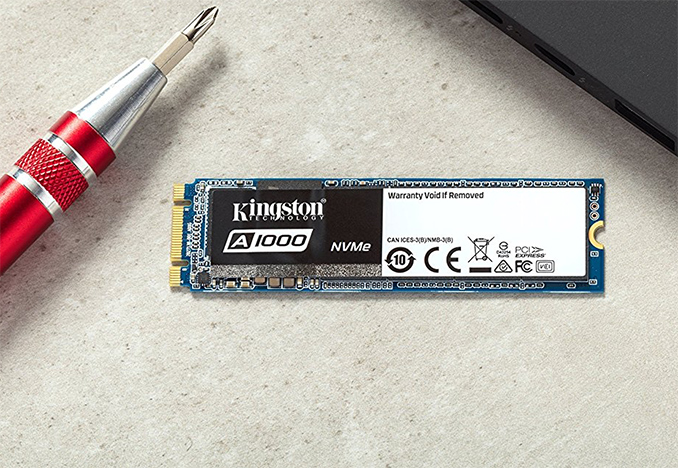


 Quote
Quote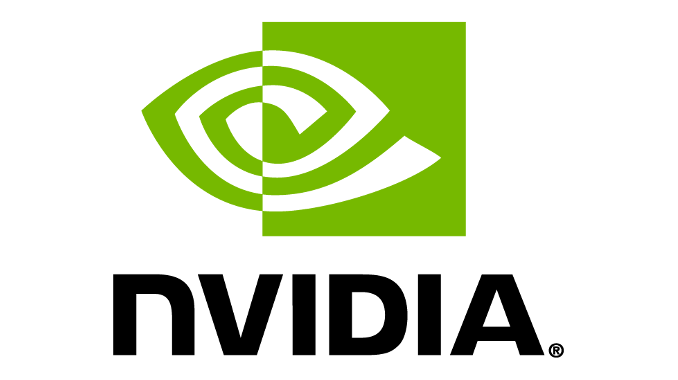
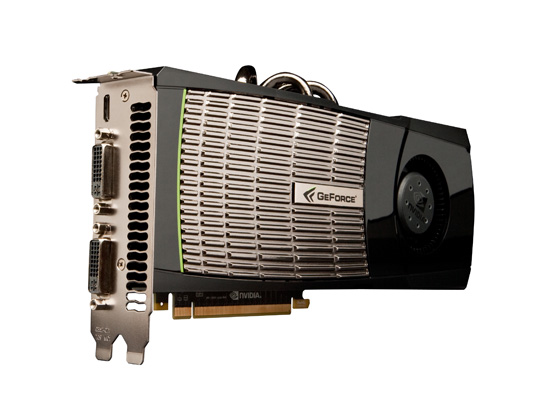
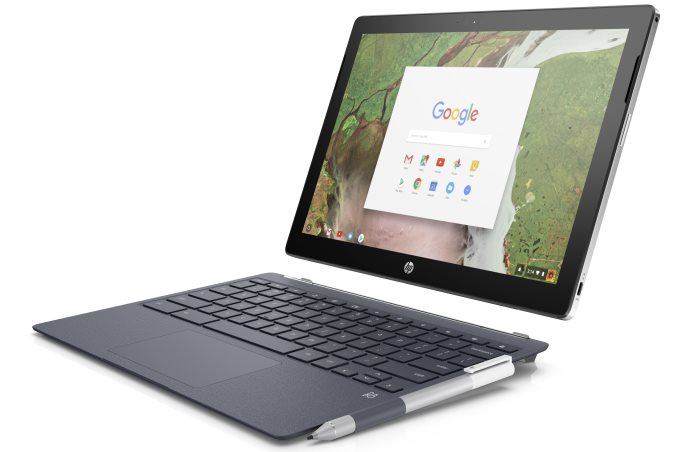
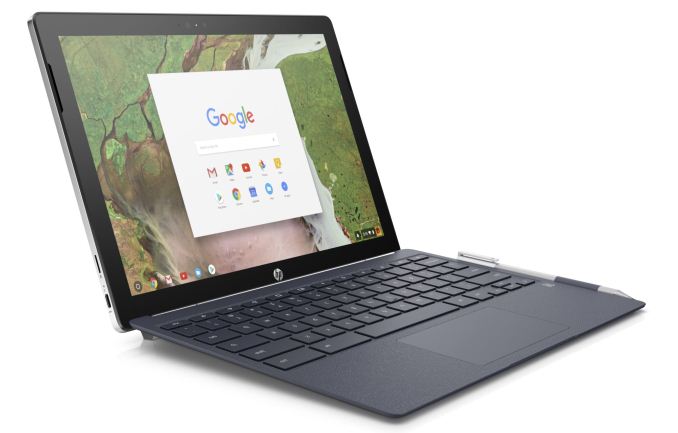



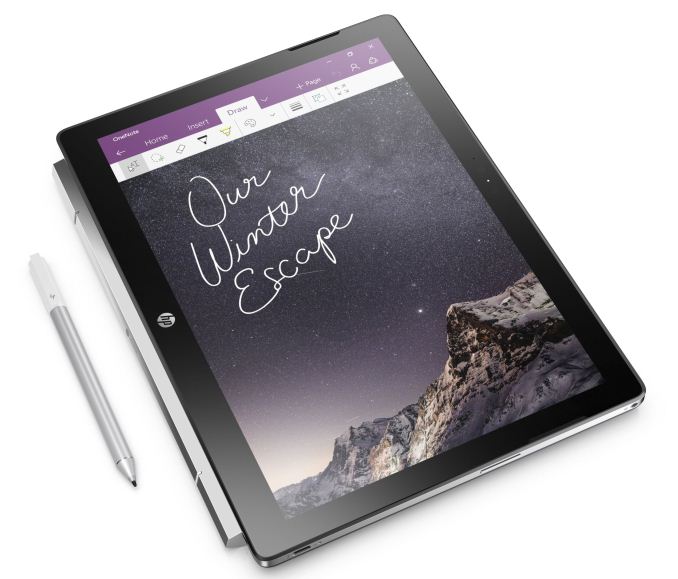
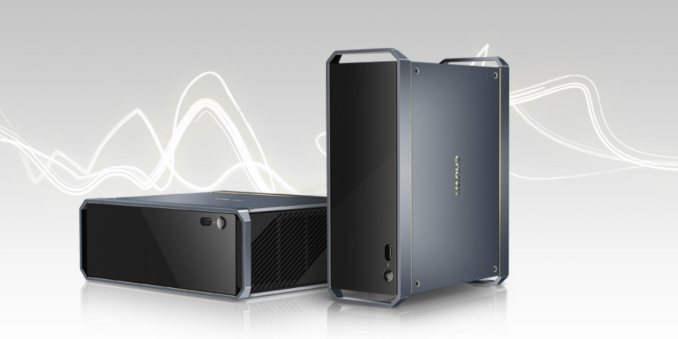

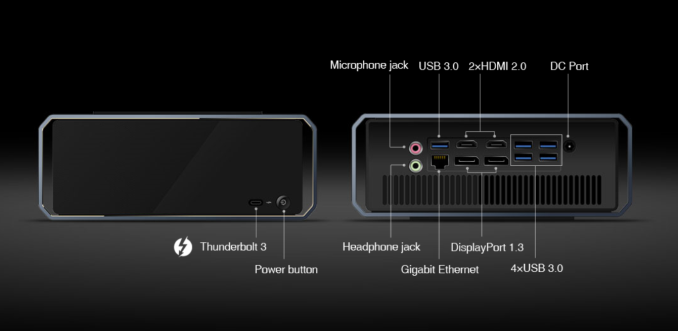

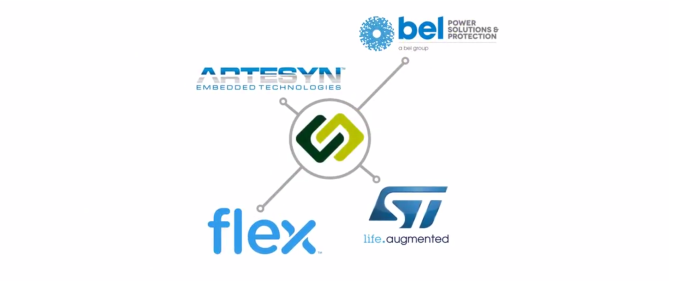
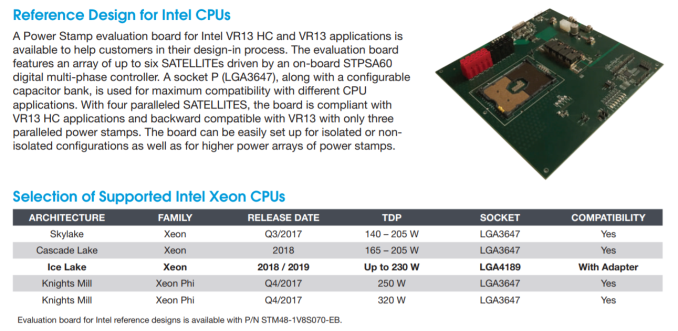
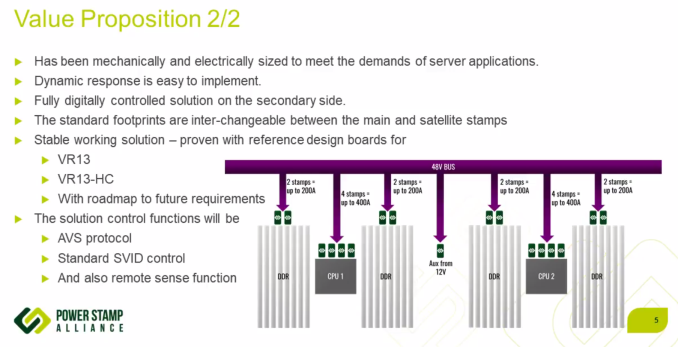
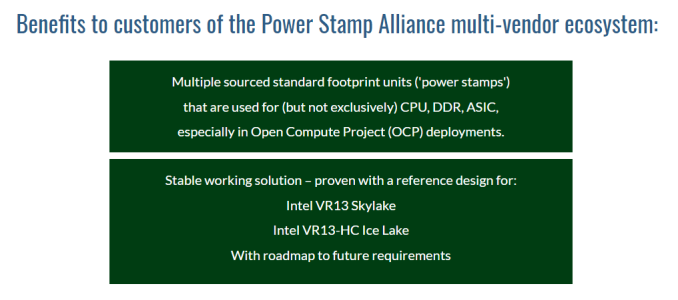
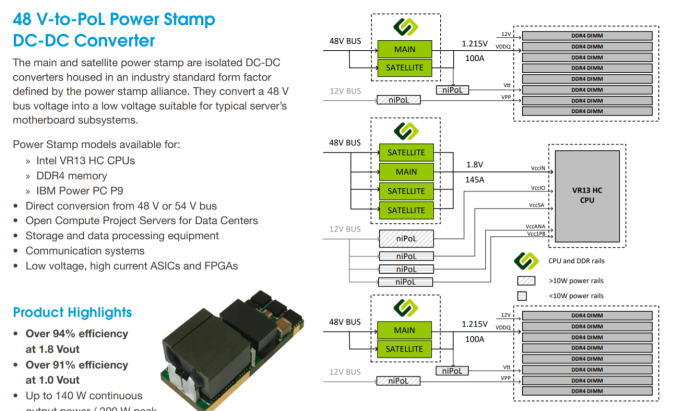
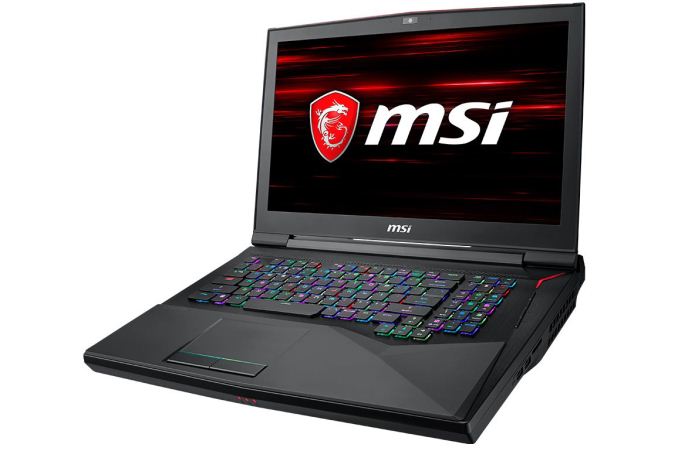

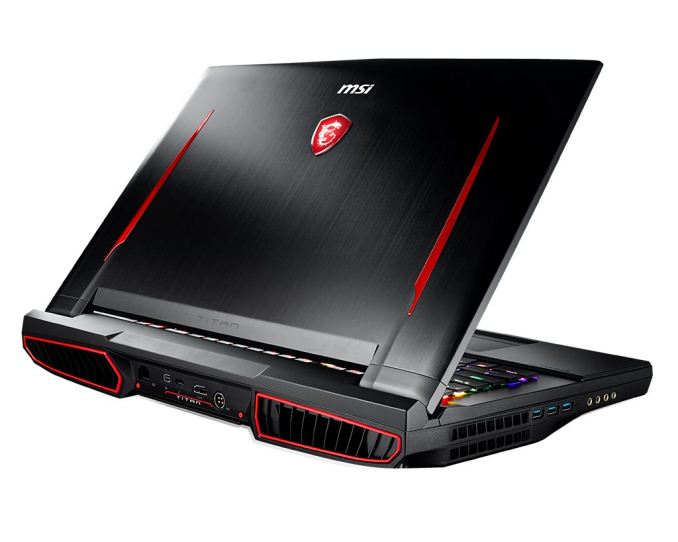
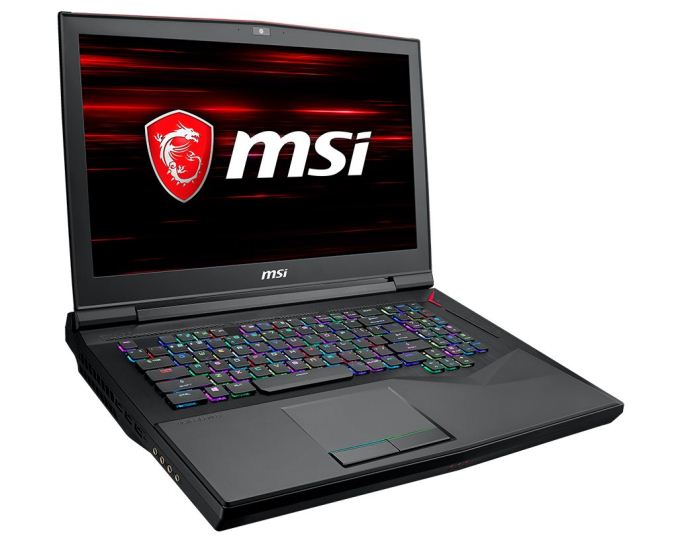
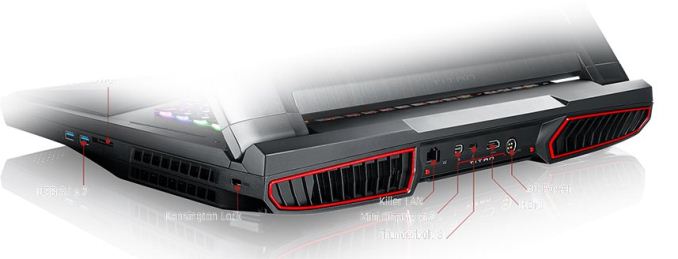

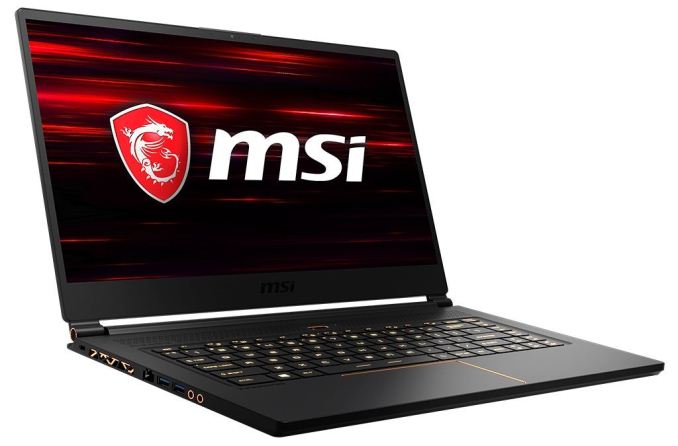
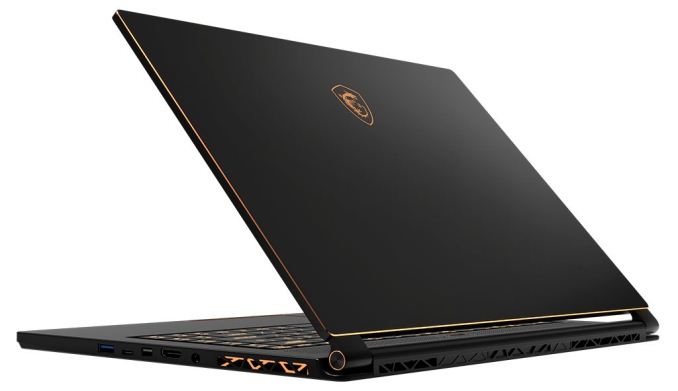

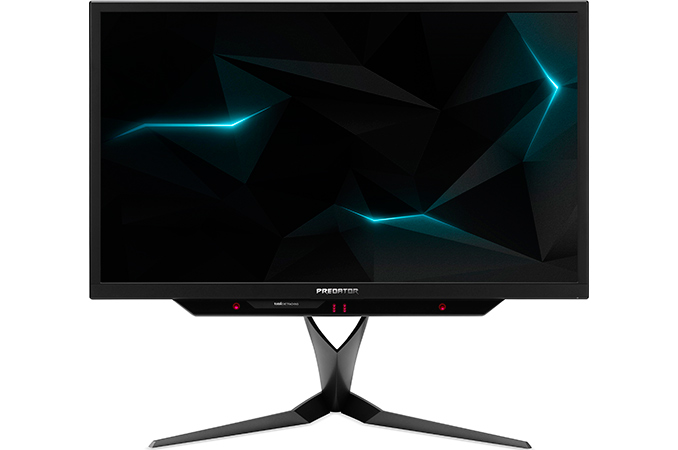
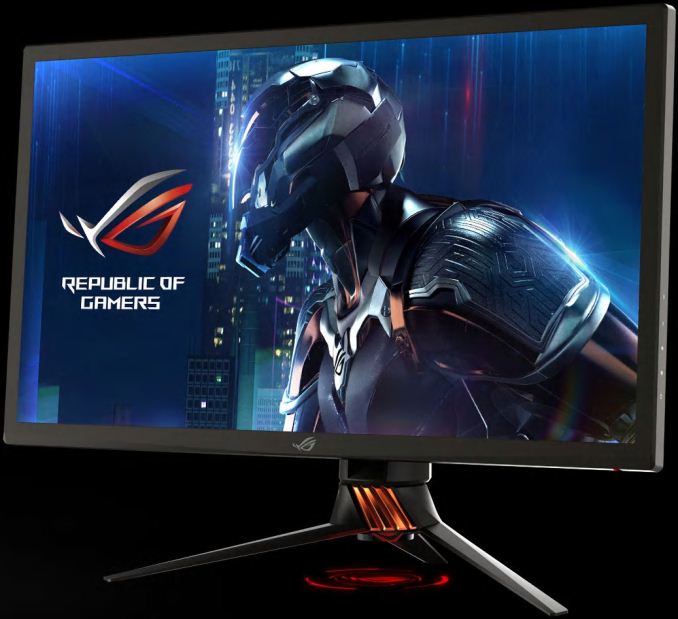
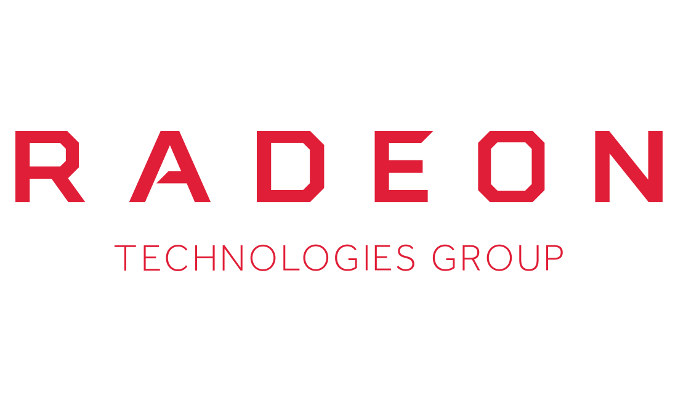
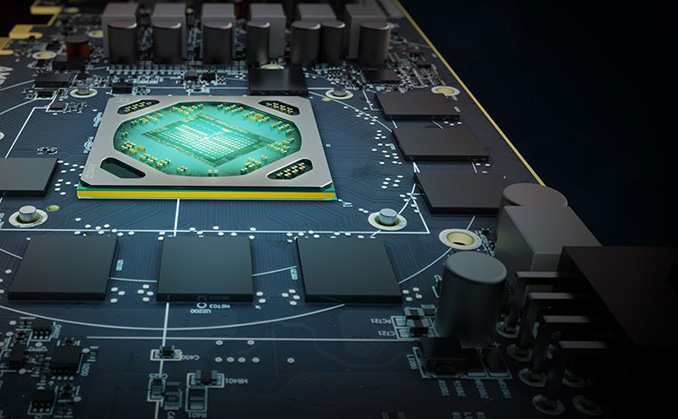
















Bookmarks